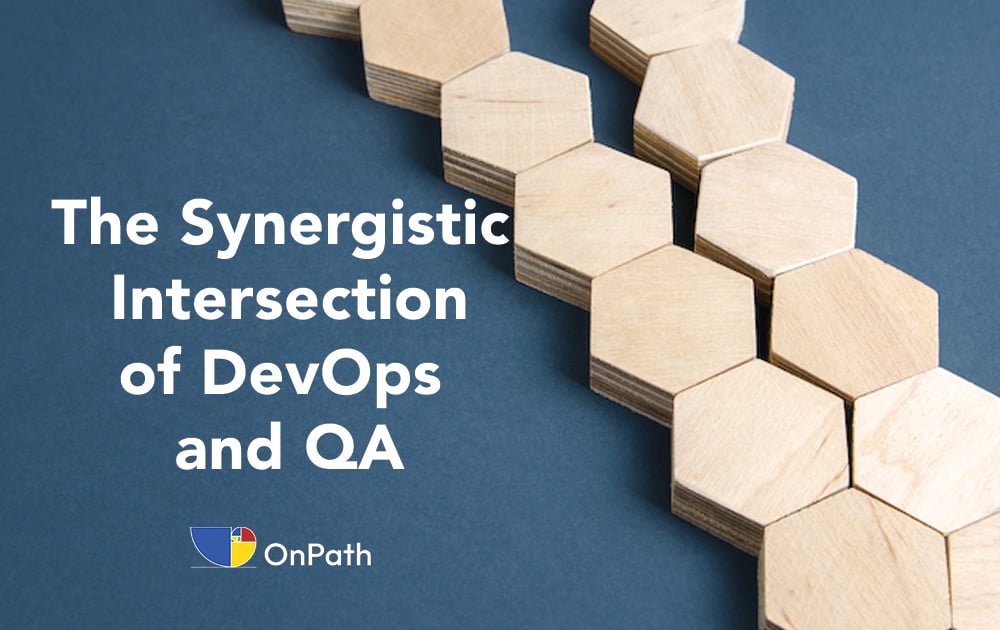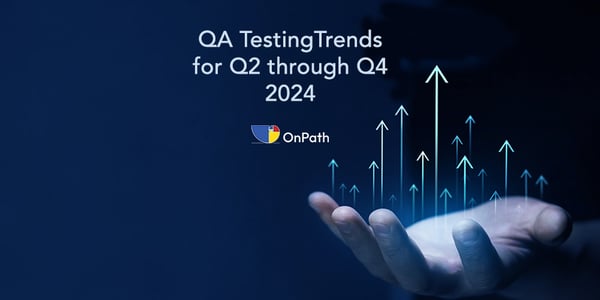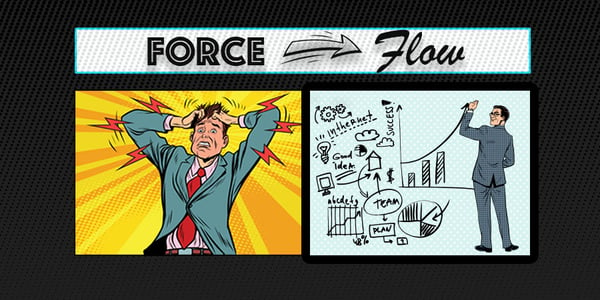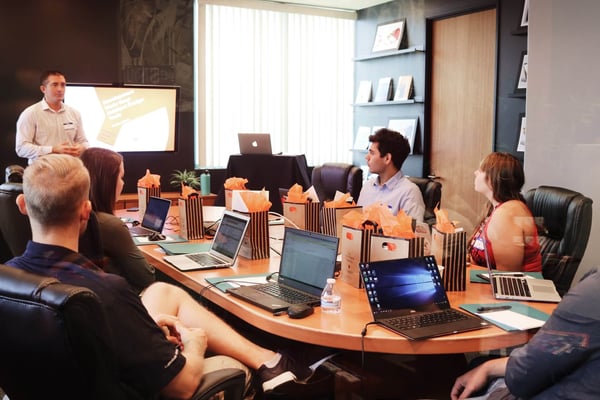In some corner of the world, there’s a debate about whether or not it was Aristotle who first asserted that, “the whole is greater than the sum of its parts.” Regardless of who said it first, it describes the result when DevOps and Quality Assurance (QA) merge.
In modern times, Buckminster Fuller, the 20th century systems visionary, used the idea as a springboard for a theory he called “synergetics” — complex and theoretical. But in practical terms, as it applies to software development, project planners and managers can adapt the simplest aspect of (possibly) Aristotle’s theory to build desirable ‘synergy’ between DevOps and QA, bringing projects and outcomes to a new level.
At the intersection of the two disciplines lies the key to faster delivery and reliable quality standards. Sharing common objectives such as accelerated time-to-market, enhanced collaboration, and improved overall software quality, both DevOps and QA aim to deliver value to end-users through efficient processes and reliable software. When a relationship between the two is established using good practices, the project and processes become greater than the sum of their parts.
Understanding DevOps and QA
DevOps is more than a set of tools — it's a cultural and technical philosophy that breaks down silos between development and operations teams, emphasizing collaboration, automation, and continuous delivery. This contributes to faster and more reliable releases, sustainable cultures of shared responsibility, and development and operations teams working together seamlessly.
QA is a multifaceted discipline encompassing various testing methodologies, processes, and tools. Its goal is to ensure that software meets the specified requirements, is free of defects, and performs optimally in diverse environments. QA is not just about finding bugs; it's about preventing them and ensuring overall quality.
CI/CD and Continuous Testing (CT)
CI/CD practices lie at the heart of DevOps, enabling the continuous integration of code changes and their automated deployment. QA plays a pivotal role in this process by ensuring that every code change is subjected to rigorous testing, guaranteeing the stability and reliability of the application.
Test automation is a cornerstone of the DevOps and QA collaboration. Automated testing not only accelerates the testing process, but also ensures repeatability and consistency. This leads to faster feedback loops, allowing developers to address issues early in the development cycle.
Good Practices for DevOps and QA Collaboration
To achieve a seamless intersection between DevOps and QA, involve QA teams early in the development process. This promotes communication, understanding, and collaboration between developers and testers.
"Shift-left” testing involves moving testing activities closer to the development phase. Potential issues are identified and addressed early, reducing the cost and time associated with fixing defects later in the development lifecycle.
One fundamental shift in the DevOps and QA intersection is the concept of shared ownership and responsibility. In a collaborative environment, both development and QA teams share accountability for the entire SDLC.
Effective communication is a linchpin in successful DevOps and QA collaboration. Collaboration tools, such as project management tools and communication platforms, enhance real-time communication between development and QA teams. Regular meetings and feedback sessions further encourage effective collaboration across the board. Cross-functional teams, comprising members from both DevOps and QA domains, promote a shared sense of ownership and responsibility. This minimizes handovers, accelerates decision-making, and fosters a collaborative mindset.
Cultural differences between DevOps and QA teams can pose a significant challenge. Overcoming this requires a concerted effort to build a culture of collaboration, mutual respect, and shared goals. See the case studies at the end of this article to learn more about surmounting team cultural differences.
Toolchain Integration
Ensuring seamless integration of tools used by DevOps and QA teams is essential for a smooth collaboration. Misaligned tooling can lead to inefficiencies, delays, and communication breakdowns. Standardizing and integrating tools wherever possible is crucial.
Test Environment Management
Inconsistent and unreliable test environments can hinder the testing process. Implementing effective test environment management practices, including version control, configuration management, and automated provisioning, is essential for smooth QA processes within the DevOps pipeline.
Transformative Benefits for Software Development Projects
Accelerated Time-to-Market
The collaboration between DevOps and QA accelerates the delivery pipeline, reducing time-to-market. Automated testing, continuous integration, and deployment practices contribute to faster and more frequent releases.
Improved Software Quality
The intersection of DevOps and QA ensures a relentless focus on software quality. Continuous testing, feedback loops, and proactive issue identification contribute to a higher standard of quality throughout the development lifecycle.
Enhanced Collaboration and Communication
DevOps and QA collaboration contributes to a culture of open communication and collaboration, leading to healthy relationships between development and QA teams. The end result is improved efficiency and effectiveness.
Embracing a Culture of Collaboration
DevOps and QA collaboration starts with breaking down traditional silo structures between development, operations, and testing teams. Silos often lead to miscommunication, bottlenecks, and a lack of shared goals. Embracing a culture of collaboration means encouraging cross-functional teamwork and creating an environment where individuals feel empowered to share ideas and insights.
One fundamental shift in the DevOps and QA intersection is the concept of shared ownership and responsibility. In a collaborative environment, both development and QA teams share accountability for the entire SDLC. This change in mindset creates a unified team working towards common objectives, leading to better outcomes and increased efficiency.
A key aspect of successful collaboration is establishing a continuous feedback loop between development and QA teams. This facilitates ongoing communication about requirements, changes, and testing results. Regular feedback sessions allow both teams to align with project goals, establishing an iterative and improvement-driven approach.
Achieving Continuous Integration and Continuous Deployment (CI/CD)
Continuous Integration and Continuous Deployment (CI/CD) are at the heart of the DevOps philosophy. CI involves integrating code changes into a shared repository multiple times a day, while CD automates the process of deploying code changes to production. Automation is required to achieve the speed and reliability required for effective CI/CD.
Automated Testing in the CI/CD Pipeline
Automated testing plays a pivotal role in the CI/CD pipeline, providing rapid and consistent feedback on code changes. Various types of automated tests, including unit tests, integration tests, and end-to-end tests, ensure that software modifications do not introduce defects, and maintain overall integrity of the application. The collaboration between DevOps and QA is exemplified in the seamless integration of automated testing into the CI/CD pipeline.
Ensuring Code Quality with Static Analysis
In addition to automated testing, static code analysis tools assess the quality of code without executing it. This helps identify potential issues, security vulnerabilities, and adherence to coding standards. Collaboration between developers and QA professionals ensures that these tools are effectively integrated into the development process, enhancing the overall quality of the codebase.
Harnessing the Power of Test Automation
From traditional record-and-playback tools, to modern, code-driven frameworks, the landscape has evolved significantly. A Software Development Engineer in Test (SDET) must have a sufficient breadth and depth, or variety of experience with test automation frameworks. The collaboration between DevOps and QA is exemplified in the strategic selection and implementation of test automation frameworks that align with both teams' goals.
Creating Scalable and Maintainable Automated Tests
Scalability and maintainability are key considerations in the success of test automation efforts. DevOps and QA collaboration ensures that automated tests are designed with scalability in mind, accommodating changes in the application without requiring extensive modifications. Regular collaboration also facilitates the maintenance of automated test suites, keeping them robust and efficient.
Test Driven Development
Test Driven Development (TDD) is a practice where tests are written before the corresponding code. This approach encourages collaboration between developers and QA, as it demands a clear understanding of requirements and desired outcomes. TDD not only improves code quality, but also enhances communication and collaboration between different stakeholders.
Realizing Business Benefits
The collaboration between DevOps and QA results in tangible business benefits, including cost savings and efficiency gains. By streamlining processes, automating repetitive tasks, and catching defects early in the development cycle, organizations can achieve significant cost reductions and operational efficiency improvements.
Enhanced Customer Satisfaction
Quality Assurance is inherently tied to customer satisfaction. The intersection with DevOps amplifies this by delivering features and improvements faster while maintaining a high level of quality. Reduced time-to-market contributes to overall customer satisfaction and loyalty.
Enabling Innovation and Continuous Improvement
The collaboration between DevOps and QA not only enhances current processes but also paves the way for innovation and continuous improvement. By establishing a culture of experimentation, learning from failures, and adapting to change, organizations position themselves at the forefront of technological advancements and remain competitive.
Future Trends in DevOps and QA Intersection
Integration of Artificial Intelligence in Testing
The intersection of DevOps and QA is poised to leverage the potential of Artificial Intelligence (AI) in testing. AI-driven testing tools can autonomously identify patterns, predict failure points, and even generate test cases. The collaboration between DevOps professionals and QA teams will be instrumental in harnessing the power of AI to enhance testing efficiency and accuracy. The use of AI in testing only improves over time, so its inclusion isn’t just recommended — it’s now a fundamental part of Dev-Ops.
DevSecOps: Integrating Security into DevOps and QA
The growing emphasis on security in software development has given rise to the concept of DevSecOps. This involves integrating security practices into the DevOps and QA processes, ensuring that security considerations are addressed from the early stages of development. Collaboration between security experts, DevOps, and QA is crucial for implementing robust security measures without compromising performance.
Shaping the Future of Software Development
The intersection of DevOps and Quality Assurance is not just a collaboration of two domains; it is a transformative force shaping the future of software development. Embracing and championing this collaboration positions forward-looking teams at the forefront of innovation and success. While the journey involves overcoming challenges, nurturing collaborative cultures within SDLCs, and leveraging automation and best practices, the result is not just efficient and reliable software delivery but a cultural shift that fosters continuous improvement, innovation, and excellence. Understanding the symbiotic relationship between DevOps and QA contributes to the success of projects and also plays a pivotal role in defining the next chapter of software development.
Examples of Overcoming Cultural and Organizational Challenges in SDLCs
Cultural alignment is often cited as a significant challenge in the intersection of DevOps and QA. Nurturing a collaborative culture requires leadership commitment, effective communication, and a shared vision. Organizational leaders play a crucial role in fostering an environment where collaboration is celebrated, and the contributions of both DevOps and QA teams are valued. Below are examples of how three organizations solved for this.
Company A Challenge
Company A, a large financial institution, faced cultural challenges arising from a hierarchical structure that hindered effective collaboration. Silos were prevalent, and communication breakdowns between development and QA teams were common. There was a perception that QA was a bottleneck rather than a collaborator in the software development process.
Solution
Recognizing the importance of a collaborative culture, Company A embarked on a cultural transformation initiative. Leadership encouraged open communication channels and flattened hierarchies to promote a sense of equality among teams. They organized cross-team events, team-building activities, and workshops aimed at breaking down barriers and fostering a collaborative mindset. Additionally, they introduced mentorship programs to encourage knowledge sharing between experienced DevOps professionals and QA engineers.
Result
The cultural shift resulted in improved communication, increased collaboration, and a shared sense of ownership. QA teams were no longer seen as gatekeepers but as essential partners in the software development process. Collaboration tools were widely adopted, enabling real-time communication and feedback. This cultural transformation not only improved the working environment but also enhanced the overall efficiency and effectiveness of the development lifecycle.
DevOps emerged as a response to the historical divide between development and operations teams. While the collaboration between DevOps and QA is pivotal, bridging the gap between development and operations is equally important. DevOps practices aim to eliminate barriers between these two domains, fostering a unified approach to software delivery.
Company B Challenge
Company B, a mid-sized technology firm, struggled with a traditional divide between its development and operations teams. Development teams were focused on delivering features quickly, often leading to friction when changes needed to be deployed to production. Operations teams were concerned about stability and reliability, leading to a slow and cautious deployment process.
Solution
Company B initiated a DevOps transformation to bridge this gap by implementing cross-functional teams where developers and operations engineers collaborated closely. DevOps practices, such as Infrastructure as Code (IaC) and automated deployment pipelines, were adopted to streamline the release process. Regular joint training sessions and knowledge-sharing forums were established to ensure both teams had a deep understanding of each other's responsibilities and challenges.
Result
The collaboration led to a significant reduction in deployment times, with new features and updates being released more frequently and reliably. Operations teams gained confidence in the development process, and developers became more aware of the operational implications of their code changes. This cultural shift resulted in increased trust, smoother deployments, and an overall improvement in the organization's ability to respond to market demands.
Measuring success in the DevOps and QA intersection requires alignment on key performance indicators and metrics. Both teams must work together to define and track metrics that reflect the overall health of the development process. This collaborative approach ensures that the goals of DevOps and QA are aligned, promoting a holistic view of success.
Company C Challenge
A global software provider, Company C faced challenges in aligning the metrics and KPIs of its DevOps and QA teams. Development teams were focused on code commit frequency and feature delivery, while QA teams were measured primarily on defect detection rates and test coverage. Misaligned metrics led to conflicting priorities and a lack of a shared vision.
Solution
Company C recognized the need for a unified set of metrics that reflected the goals of both DevOps and QA. Cross-functional workshops were conducted to define key success indicators that encompassed both speed of delivery and quality. Metrics such as release frequency, lead time, and customer satisfaction were identified as common goals. The teams collaborated to establish a dashboard that provided a holistic view of the development process, incorporating metrics relevant to both development and QA.
Result
The alignment of metrics led to a shared understanding of success, fostering collaboration between DevOps and QA. Teams were incentivized to work towards common goals rather than competing priorities. The unified dashboard became a valuable tool for decision-making, allowing leadership to assess the overall health of the software delivery process. This collaborative approach contributed to improved performance and satisfaction among both development and QA teams.
These real-world examples illustrate that overcoming cultural and organizational challenges in the intersection of DevOps and QA is not only possible but essential for achieving success in modern software development. Embracing a collaborative culture, breaking down silos, and aligning goals contribute to a more efficient, innovative, and resilient organization.



